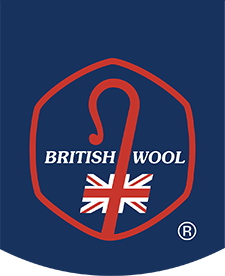Your Wool from Farm to Auction part two - Selling your wool a guide to the auction process
Wool auctions are held every two to three weeks with a total of 20 held during the season - all the wool we sell goes through our auction system. The UK was the first country in the World to go fully online and remote as a result of the Covid pandemic which offers a higher degree of flexibility and convenience to our buyers.
This flexibility allows our buyers to attend more auctions and whilst the two main buyers still buy a significant percentage of the wool offered, by giving easier access to the auction the amount sold to the remaining buyers has been increasing.
Over the last 18 months, the number of buyers in the auction has increased including the use of an agency buyer who buys on behalf of our smaller customers. This has seen an increase in the number of bids per lot with the agency buyer now buying anything up to 10% of all the wool auctioned annually.
Before each sale, the auction catalogue is produced and sent electronically to all buyers displaying all the lots being offered. Each sale lot has the technical information from the Wool Testing Authority of the micron, colour rating, expected processing yield and the percentage of vegetable matter.
The weight offered in each auction can vary between 1.3 and 1.8 million kgs and which are attended by registered buyers, most of whom are merchants trading internationally and supplying end-users. They buy in lots of approximately 8,000 kgs to fulfil orders to manufacturers. To encourage smaller scale users for whom 8,000 kgs would exceed their requirements, we can provide smaller bespoke lots.
To give greater choice and flexibility for buyers, a percentage of the wool is sold forward on a three-month available basis. This gives buyers the option of taking the wool any time during this period. Once the wool has been sold, the buyer must pay for this before collection. Also we offer an option for the final bidder, on an unsold lot, to rebid after the auction has closed.
An auction usually comprises of 150 to 200 lots of graded and tested wool. The auctioneer reduces the price until the first bid is placed. As bidding proceeds the auctioneer can decide whether to sell each lot, request further higher bids, or take the wool back into stock. Each lot sold, has a reserve price set prior to the auction.
Annually British Wool auctions approximately 22 million kgs of wool for its members through this collective marketing system. We represent all our members regardless of the flock size, everything British Wool does is about adding value to our members’ wool.


